August 19/19 12:05 pm - Review - 2020 Specialized Enduro
Posted by Editoress on 08/19/19
Earlier in the summer, we were invited to attended the 2020 Specialized product launch. Chad Grochowina will be filing a series of reports over the next six weeks, as various products are introduced to the market.
Specialized set out to make the new 170mm travel Enduro faster, pedal better, and descend like a DH bike. And, with the recent release of the new Demo DH bike, it might not come as a surprise to learn that much of the technology developed for the Demo was carried over to the Enduro, albeit in a smaller and lighter package.
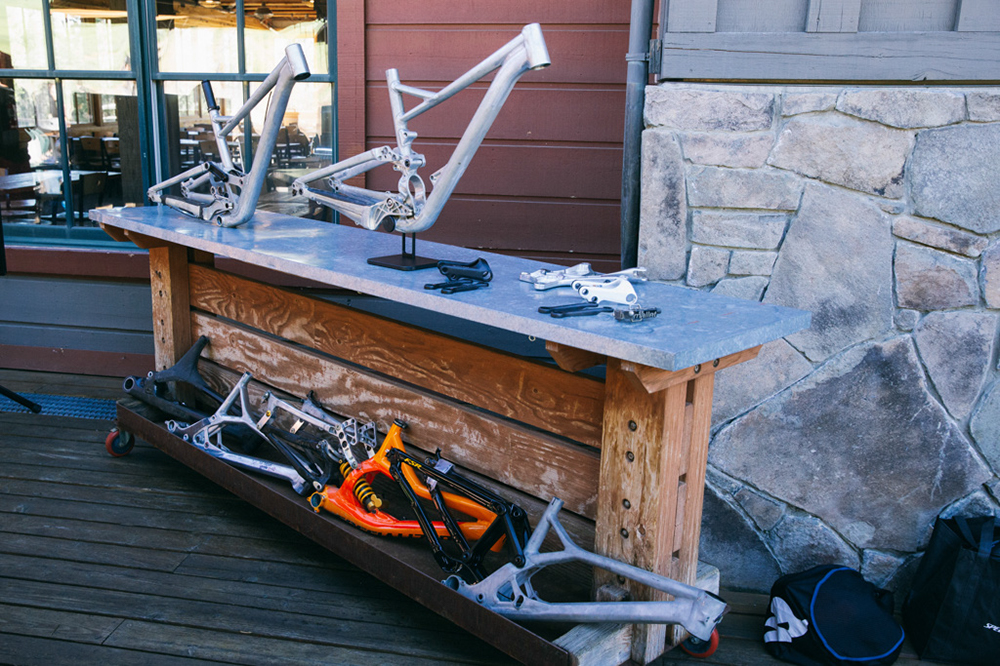
Much of the what was learned with the new Demo was carried over to the Enduro. photo Dylan Dunkerton
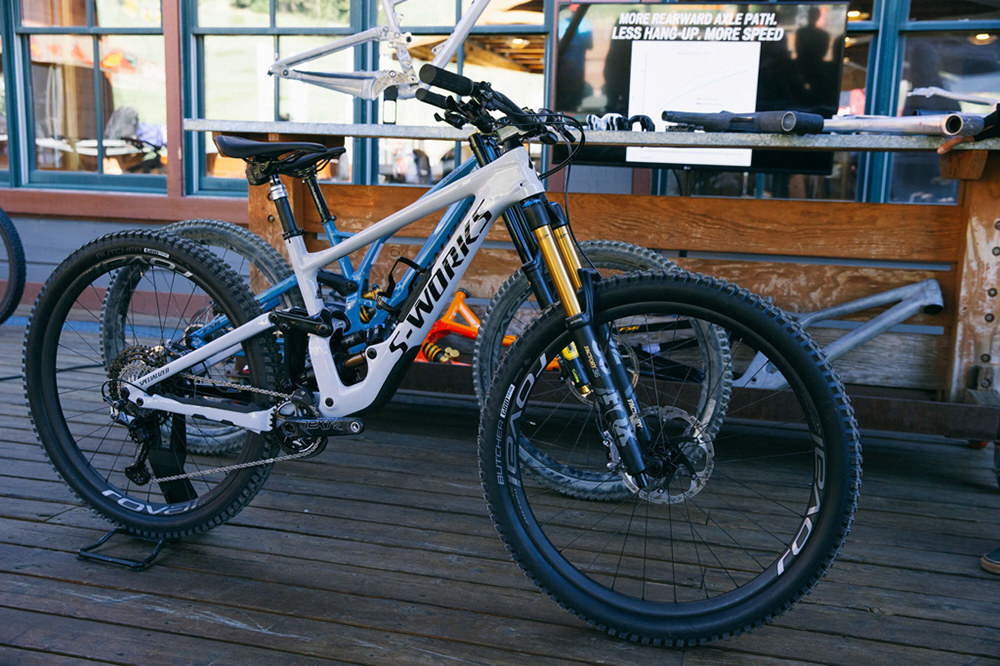
At 170mm of travel, the Enduro is a lot of bike but it can accept up to 180mm dual crown if you so desire
Photo Gallery (additional and larger photos)
There are lots of new changes to the Enduro with key highlights being: 170mm of travel front and rear, a more rearward axle path, improved small bump sensitivity, better bottom-out resistance, improved pedalling efficiency and tuned chassis stiffness.
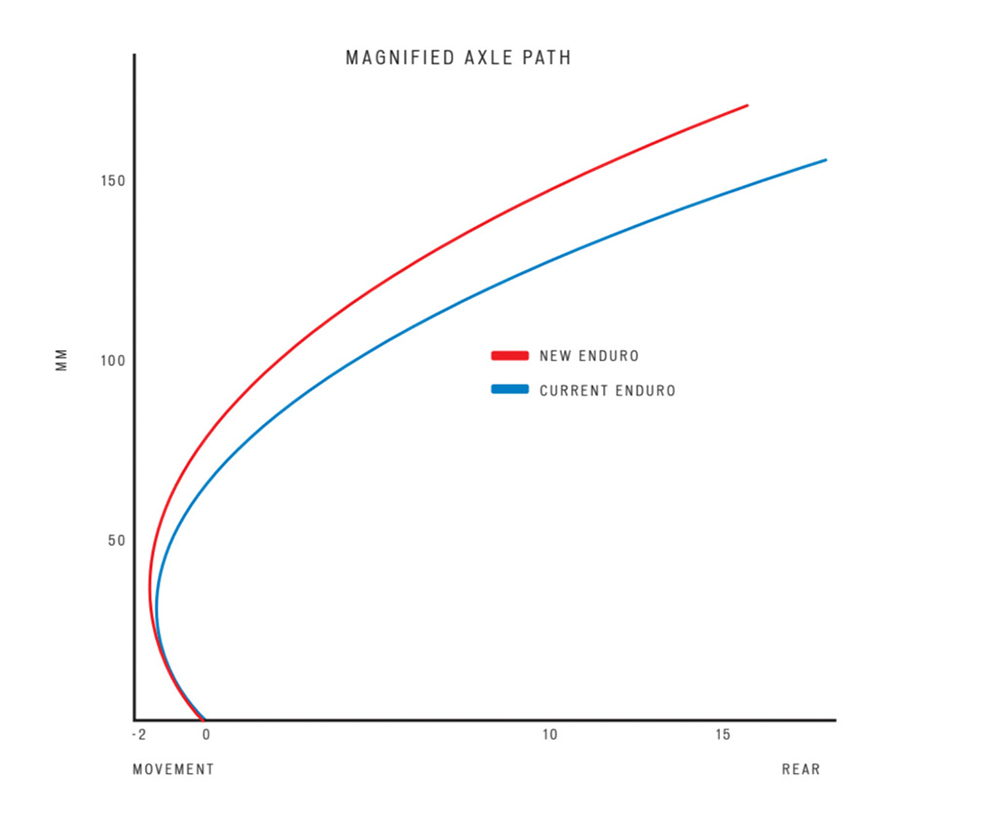
Like the Demo, the main pivot was moved to a more forward location which raises the bike's instant center, leading to a more rearward axle path through the first one third of its travel. With an increase in rearward axle travel, the bike gets hung-up less on square-edge bumps, which ultimately helps to carry the momentum on rough descents. The new pivot location also boosts the anti-squat value by 40% over the previous Enduro, making it an excellent pedalling bike for 170mm of travel.
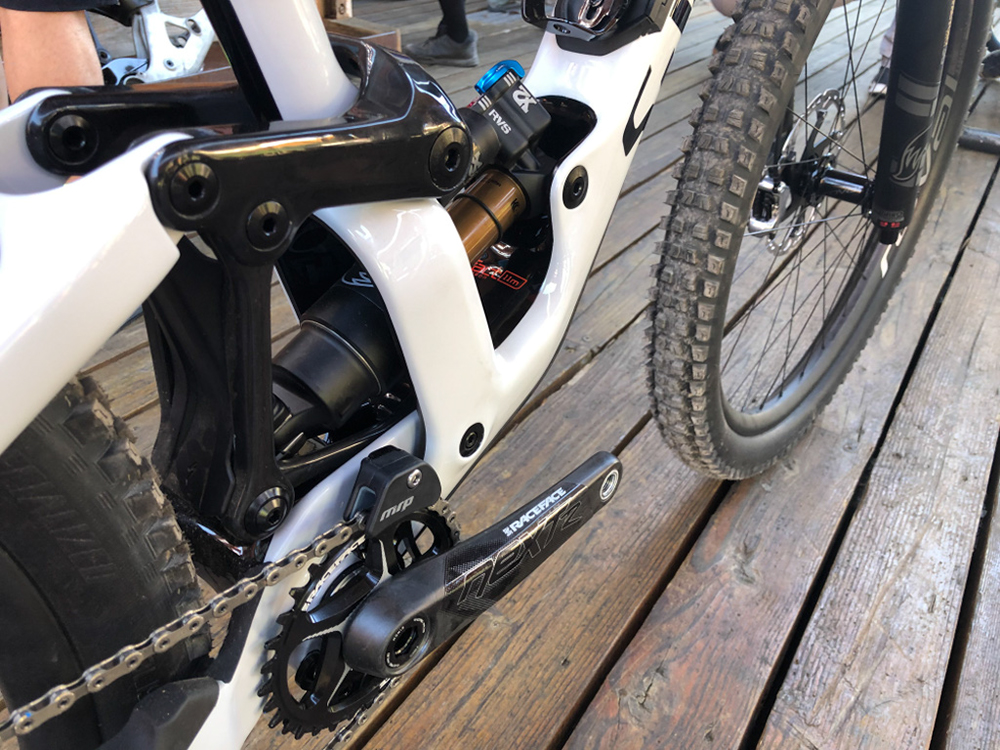
The Enduro uses a 205 x 60mm trunion rear shock and can accept most air and coil shocks
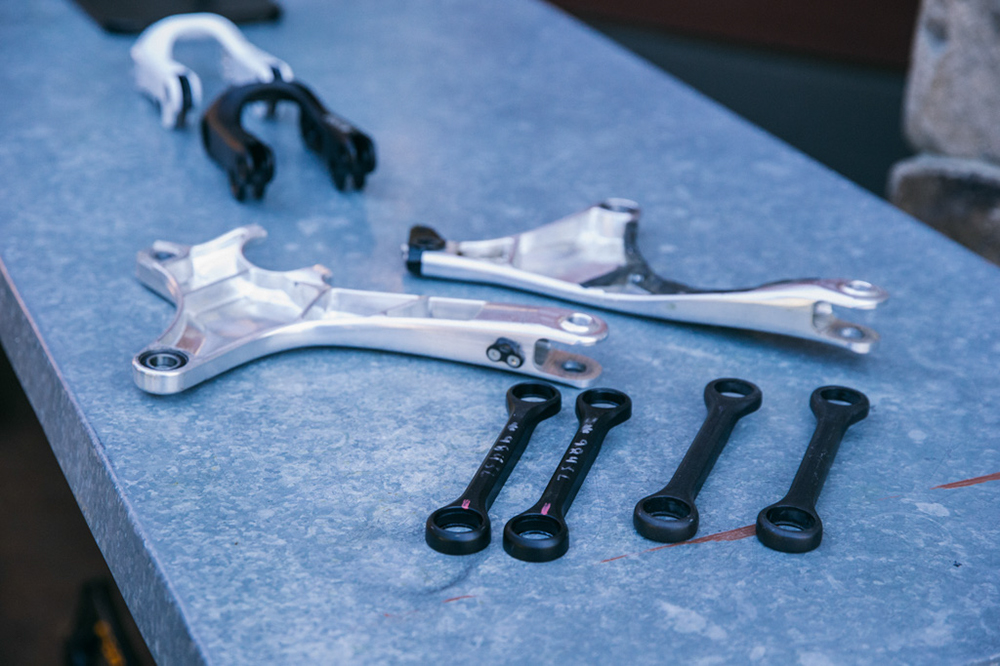
The carbon dog bones and swing links on the S-Works model are made from one continuous piece of carbon wrapped end over end. A weight savings of 250 grams. photo Dylan Dunkerton
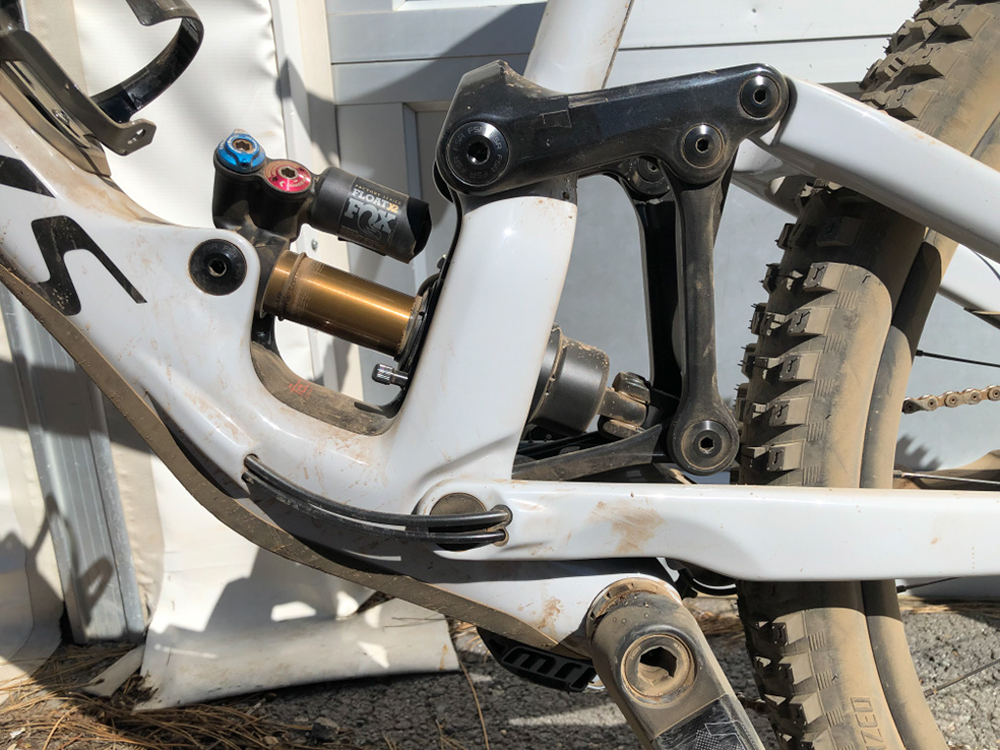
Top notch cable management
The revamped suspension design incorporates a series of dog bone linkages. These links are what Specialized used to tune the leverage curve of the rear end of the Enduro, making it more progressive than its predecessor. In the early part of the travel, the suspension feels supple, but as you move through the shock's stroke, it ramps up nicely.
Geometry changes are more modern, with a slacker head tube angle (63.9 degrees), steeper seat tube angle (76 degrees), and a longer front-center across all sizes.
Also worth mentioning, the Enduro is no longer available with 27.5" wheels and the frames are a carbon-only option. When asked about a 27.5" Enduro, it was mentioned that the focus for the new platform is 'all about speed, and reaching it quickly, not hanging up on the chunder, and maintaining momentum. 29-inch wheels excel here.'
And regarding the lack of an aluminum model option: Specialized determined that carbon is the ideal frame material to achieve the right amount of stiffness as well as hitting all the weight targets. With respect to stiffness, it wasn't about developing the stiffest chassis, but rather finding the right balance of stiffness between the front and rear. On average, the rear-end is 12% stiffer over the old model, while the front-end stiffness remains the same.
Like the new Epic HT, Rider First layup schedules were put into play across Specialized's Style Specific sizing, denoted through S2 to S5. By keeping the standover height pretty low across sizes and utilizing long dropper posts, most riders can choose from a couple of sizes based on the style of riding they prefer.
There are four new Enduro models starting at the Comp 29: $5699, Elite 29: $6699, Expert 29: $8499 (tested), S-Works 29: $12,499; all of the frames are constructed from the same Fact 11M carbon. The S-Works edition has all carbon upper, mid, and lower links, which accounts for a 250 gram (0.55lbs) weight savings. The Comp will be available at dealers at the end of the year, the Elite and Expert at the end of September, and the S-Works model is available now.
I had an opportunity to ride the Enduro for a day at Northstar Resort California. The park wasn't open to the public yet, but they did have a few trails open for us to session for the day. I ended up doing most of my laps on the Boondocks Trail, which was about perfect to get a feel for the Enduro.
Watch Danny Manning ride the Boondocks Trail
For our first lap, our leader James Nixon thought it would be fun to pedal to the top of the mountain (despite the working chairlift). It was a great opportunity to get a feel for how well the Enduro climbs. For a 170mm travel bike with a pretty slack front-end, I found it easy to get into a rhythm as we navigated our way up the hill. My bike for the day was the Expert model with a Rock Shox Lyric Select fork and a Rock Shox Super Deluxe rear air shock.
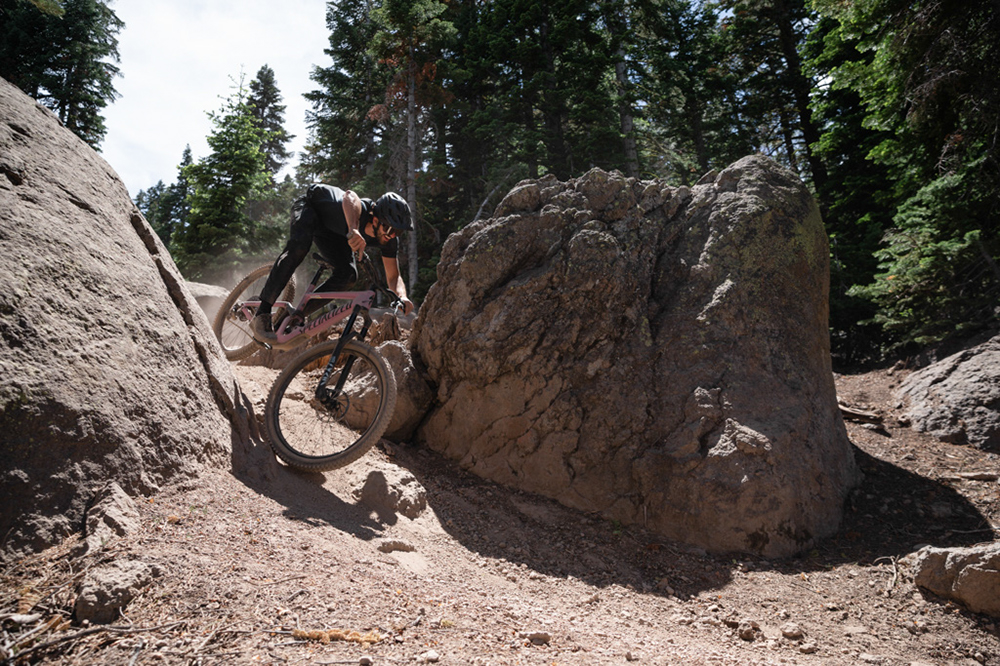
James Nixon putting the Enduro through its paces photo Dylan Dunkerton
Photo Gallery (additional and larger photos)
Faffing was kept to a minimum when I was setting up my suspension, and once I had my sag set and rebound turned to my liking, I never gave it another thought. When casually pedalling up the mountain, the suspension remained active, mostly staying high in its travel. When I was out of the saddle and pushing it a bit, there was some inefficient movement but that was remedied by flipping the climb switch on the shock to firm up the suspension.
The Enduro didn't feel like a mini DH bike when pedalling, but it sure as hell did when it was pointed down the trail. My test bike was size S4, which would be about a Large in normal frame sizes. It was an easy bike to get comfortable on and felt like I was sitting amongst the wheels rather than on top of them.
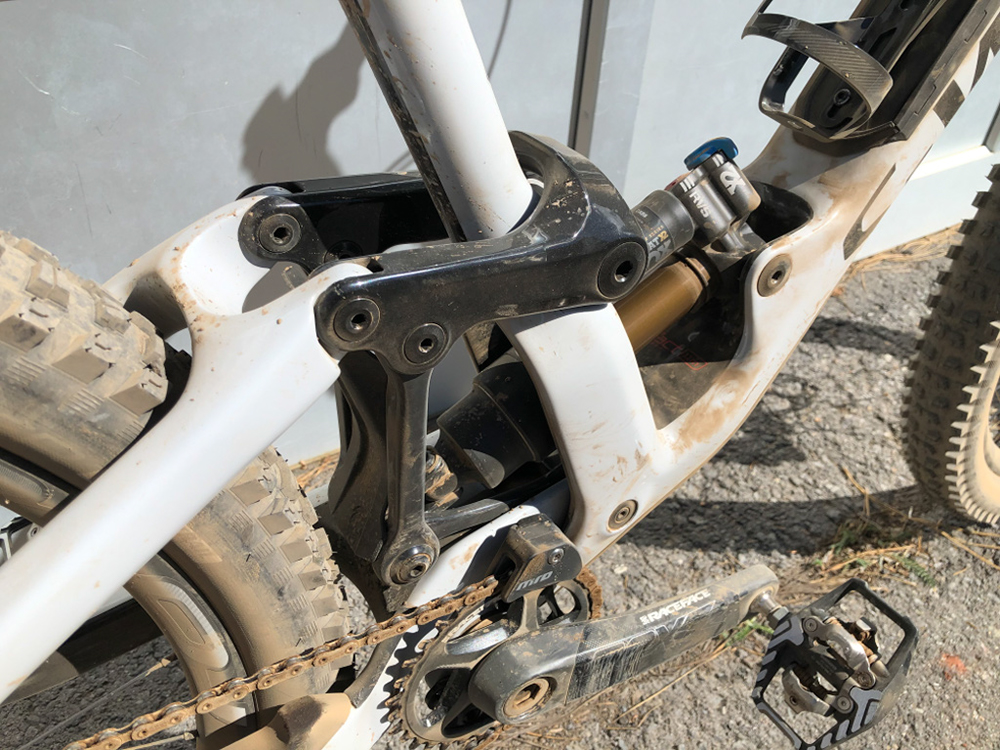
Lower slung weight and a lower center of gravity makes the Enduro a cornering machine
The Boondocks trail was a mix of loose stone, scattered baby head rocks, large boulders and rock rolls, roots, berms and jumps. It took a couple of laps to get a feel for the track but after that, it was easy to focus on how the bike performed on the terrain. It was easy to lean into the turns and with the suspension being so low in the frame, it made for a lot of fun railing the berms. Where I think the Enduro truly shines was when going flat-out over the really rough rocks and roots.
The increase in rearward axle path became glaringly obvious 'cause the bike would continue to pick up speed, still holding its line well, smashing through anything in its path; it truly felt like a mini DH bike. As the day progressed and the braking bumps grew, the bike handled them like a champ. The increased anti-rise with a tried and true Horst-link suspension makes the Enduro is one of the better bikes I've ridden once the tracks are blown out with braking bumps at their maximum.
Overall, I would say the Enduro makes for an exceptional park bike or enduro racing machine. It's a big bike if you're the type of person that likes to pedal all day, and it can be cumbersome when climbing up tight and techie bits of trail, but it still climbs ok for a 170mm of suspension travel. It's an extremely capable bike that I will confidently say can handle most of the trails we have on this planet.
Photo Gallery (additional and larger photos)
| Return to Canadian Cyclist homepage | Back to Top |





